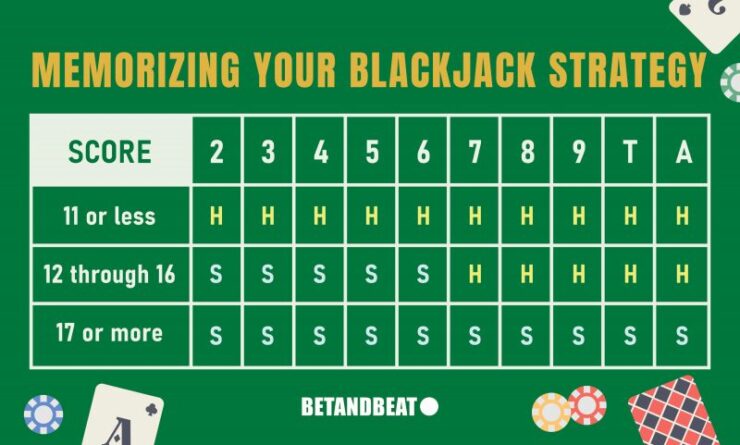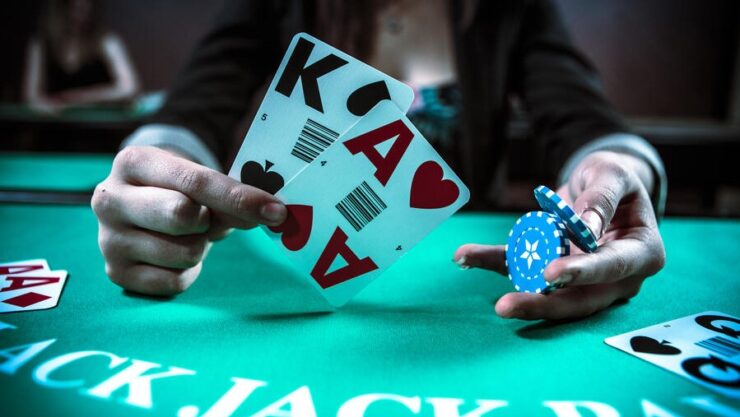Blackjack, the timeless game of 21, isn’t merely about chance. Indeed, strategy plays a significant role in the outcome, turning the odds in your favor when applied with precision and understanding. In the kaleidoscopic world of casinos, both online and physical, Blackjack offers an appealing mixture of luck, skill, and excitement. This comprehensive guide breaks down the essential techniques and strategies for achieving victory in Blackjack, covering when to hit and fold, among other nuanced decisions.
Basic Blackjack Strategy Overview

In the game of Blackjack, where each decision can be vital, employing a basic strategy can dramatically improve your chances. This foundational approach involves understanding the probability of specific outcomes, based on both the player’s and dealer’s cards. By doing so, you can make informed decisions on when to hit, stand, split, or double down. The essence of basic Blackjack strategy revolves around the concept of expected value.
Knowing the most likely results for various situations allows players to minimize losses and maximize gains. This approach requires a clear understanding of the game’s rules and a willingness to adhere to a set strategy, regardless of short-term outcomes, recognizing that statistics will eventually bear out over time. For a top-tier online casino to play this iconic card game and test out the strategies you learn here, visit www.casinousa.com.
When to Hit in Blackjack
Hitting, or requesting another card, is a pivotal decision in Blackjack. It’s a choice made when you believe that taking another card will enhance your hand without exceeding 21. There are clear times to hit, such as when your hand totals a soft 16 or less. In these scenarios, the risk of busting is low and hitting can lead to a stronger hand.
The question of when to hit becomes more complicated as your hand’s total approaches 21. Detailed charts and mathematical analysis provide guidance here, and consistent application of these principles can significantly affect your success rate. For instance, if you have a soft 18 and the dealer shows a strong card like a 9, 10, or Ace, hitting might be your best option.
Factors Influencing Hitting Decisions
Not all hitting decisions in Blackjack are clear-cut. Various external elements play a part in this intricate decision-making process. These factors include the number of decks in play, the specific rules of the game at a particular table, and the visible card of the dealer.
The complexity of Blackjack decisions arises from these variables, all intertwining to form a multifaceted problem. Take, for instance, the dealer’s up-card. This single piece of information can drastically shift your hitting strategy, as it provides insight into the strength of the dealer’s hand. Coupling this with knowledge about the rest of the game’s dynamics will make your hitting decisions more robust and successful.
Optimal Times to Fold in Blackjack

Folding, or choosing to surrender your hand in Blackjack, is a less common but crucial decision. By doing so, you opt to lose half your bet rather than risk losing the entire amount. The right moment to fold often depends on your hand’s total and the dealer’s up-card. If you have a hard 16 and the dealer shows a 9, 10, or Ace, folding might be the best choice.
Opting to surrender requires understanding not just the current hand but also the broader context of the game. In some versions of Blackjack, surrendering isn’t even an option. When it is, though, understanding when to fold as part of your overall approach can conserve your bankroll and keep you in the game longer.
Managing Risk and Bankroll
In Blackjack, victory isn’t about one hand but the cumulative result of many. Therefore, managing your bankroll and evaluating risk is vital. Set aside a specific amount for playing and stick to it, ensuring that you never wager more than you can afford to lose. This discipline separates casual players from serious, successful ones.
The art of risk management in Blackjack extends beyond mere bankroll considerations. Assessing risk involves recognizing the game’s variance and adapting your strategy accordingly. High-risk plays might pay off occasionally but can devastate your bankroll if relied upon consistently. A balanced approach, adjusting to the specific dynamics of each game, can lead to more consistent, long-term success.
Adjusting Strategy for Different Blackjack Variations
Blackjack’s popularity has led to multiple variations of the game, each with unique rules and opportunities. Adapting your strategy to these variations is vital. For instance, in European Blackjack, the dealer doesn’t take a hole card until the player has acted, altering optimal decisions in specific situations.
The diversity of Blackjack variations makes a one-size-fits-all strategy impractical. Whether it’s Double Exposure, where both dealer cards are visible, or Spanish 21, which offers bonus payouts for specific hands, understanding the nuances and adapting your approach can lead to more effective play. Tailoring your strategy to the specific version you’re playing adds depth and excitement to the game.
Tips for Improving Decision Making

Enhancing decision-making in Blackjack isn’t solely about mastering specific strategies. It involves a holistic approach that includes emotional control, awareness of biases, and continuous learning. Cultivating patience and resisting the urge to chase losses are key aspects of developing a winning mentality.
Alongside cultivating the right mindset, utilizing tools and resources can enhance your decision-making abilities. Books, online guides, and simulation software offer opportunities to learn and practice, transforming theoretical knowledge into practical skills. Remember, continual growth and adaptation are the hallmarks of a successful Blackjack player.
Practicing and Honing Your Skills
No matter how much theoretical knowledge you possess, practice is paramount. Simulating real-game situations enables you to test your skills and make adjustments before hitting the casino floor. Playing online or using software that mimics casino rules and conditions can be an invaluable asset.
Real-life experience at a physical table also offers unique learning opportunities. Observing other players, understanding the dynamics of a live game, and adapting to pressure are things that can only be learned through experience. Combining practice with a thirst for continuous improvement will undoubtedly sharpen your Blackjack abilities, giving you the edge you need.
Final Thoughts
The world of Blackjack is rich, complex, and endlessly fascinating. With the right combination of strategy, practice, and mindset, it’s a game where skill can genuinely make a difference. This guide has delved into the intricacies of when to hit and fold, risk management, and other essential strategies, all tailored to make complex information digestible for a broad audience. Whether you’re taking your first step into the realm of Blackjack or seeking to refine your existing skills, may this article serve as a valuable companion on your journey to success.

